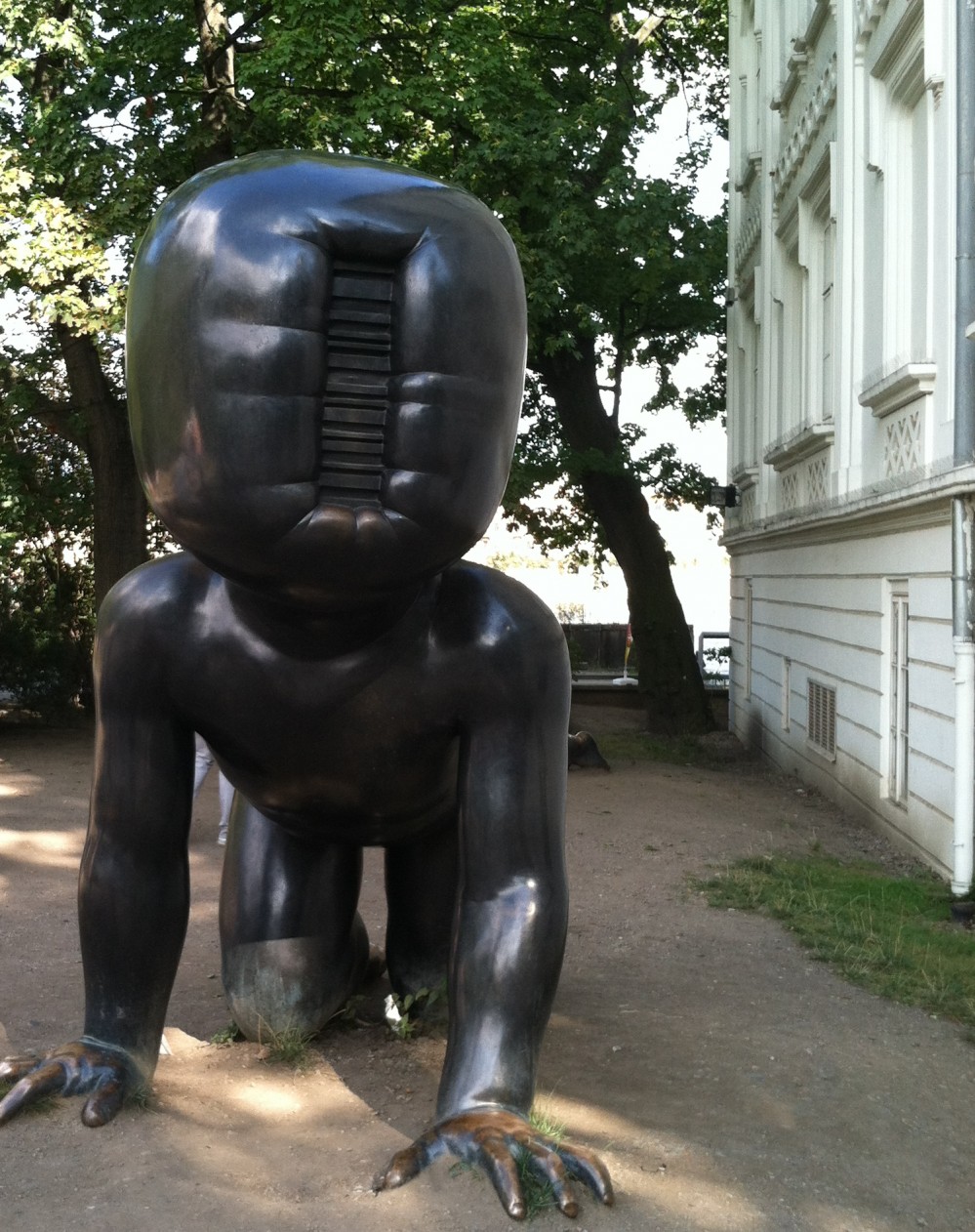It’s a glorious day to explore in Oshweitheim (phonetic name). The sun is shining on the squat Polish houses, the inhabitants of this small town are wandering around with their lunches and children in tow, and everywhere flowers are turning their faces to the sun.
An hour of free time, and I’m off to see this beautiful place. About ten minutes into my walk, I come to a field in the middle of the houses and flats. Seeing a path well trodden in the dirt, and a few men and a dog across the field tending a backyard (Rural Poles are obsessed with gardening), I make my way down the track.
Halfway across, I’m approaching the men’s dog, a beautiful puppy whose ears would brush my knee. Dogs in Poland and the Czech Republic have been immaculately trained thus far. They don’t bark, they don’t even look at me, and I’ve missed it. So when the dog starts staring at me and wagging its tail, I’m rather pleased. I make non-language friendly noises and extend my closed fingers, to allow the dog to sniff without giving it an opening to bite.
Immediately, she starts barking like mad. I rear back, saying “Okay, Okay, I get it,” and seeing her triumph, she continues as I quickly turn and continue on the path. For obvious reasons, I’m now going fast and thinking about how dumb this random girl looks to the Poles, and when I turn around the dog is following me, still barking, and this is a threatening, full body bark. On a smaller dog, the whole body shakes with this kind of bark. This is a bark to freaking run from.
But she stops at the boundary of her territory, and I continue on unmolested. And then, ten minutes later, an enourmous German Shepard hears me passing and tries to jump the fence. Unsuccessfully, thank God, but the Polish “beware of dog” sign is thouroughly redundant, and I’m debating running for my life.
This got me thinking about the ubiquitous dogs of Eastern Europe. Prague is stuffed with dogs, packed with beautifully manicured coats—the street cleaners are mostly there to clean up after the dogs. Krakow too, had many dogs, but on reflection I started to see something different. In Prague, the norm is for dogs to go without leashes, just walking sedately along (unless there’s a bitch in heat nearby, but that’s a whole other thing). But in Krakow, I never saw a dog off a leash.
This could be a simple legal difference, but not so the other dissimilarities. Prague dogs were almost exclusively purebred, the telltale deformities of too-short legs and impractical hair clearly marking their breed, along with their perfectly evenly colored coats. And they are small dogs, rarely larger than a cocker spaniel.
Krakow dogs were more likely to be mutts, and despite the flat living in that city, they were bigger. I saw only one or two drop-kick dogs. The rare Prague sight of a larger breed was far more common there. And in the country, the dogs were furious at a sign of intrusion.
So the obvious question is, why? A fashion trend in one of the cities? A cultural difference? But Americans have big, friendly dogs on leashes—why that difference?
I think it comes down to the difference between developed and developing nations. This difference is what I saw most clearly when we traveled from Prague to Krakow. The bus in Poland passed many well-manicured lawns and gardens, but public areas were chaotic. Street venders were in every town, and a flea market sat in every main city square. Facades were faded, pavement more worn. Bicycles were everywhere, the mark of those who cannot afford a car.
A dog is a luxury in Prague, and in the United States. We can breed for certain useless characteristics, and think about nothing but convienience when deciding what size we want a dog to be.
But in a country in which, only twenty years ago, pizza was a scarcity and jeans a luxury item, dogs fulfill their ancient function. They are not just man’s best friend: they are man’s protector. The Pole who goes looking for a dog is, consciously or not, evaluating how much security their buddy will provide.
And I think that is the fundamental difference in culture between the developing world and the developed, between the proverbial “East” and “West,” at least in Europe. There is a sense of comfort in a fully developed “1st world” nation, one that other countries lack. There is a security on the streets of Prague, a level of comfort that allows Czech women to walk alone at 11 at night, that is lacking in Krakow. There is a nervousness buried in the bedrock.
But there is something to be said for this kind of insecurity, because what it brings with it is energy. There is a spark to the streets of Krakow, a feeling of urgency and drive that has faded with the stonework in Western Europe. There is a fire in those determined to develop, to catch up with the rest of the world. In the heavily developed West, the dogs never bark, but in the East, they bark up a storm.
